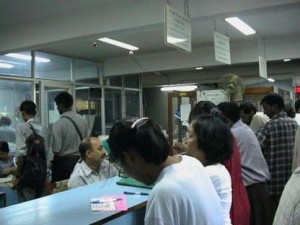 Track2Realty Exclusive: Media creates perception in the collective consciousness that realty debts are a cause of concern. It is generally assumed that a debt-ridden company is not the right one to invest. However, business cycle of some of these over leveraged companies is not just better than peers, but also high in terms of brand equity. Track2Realty finds that over projected magnitude of realty debt may or may not be a reality.
Track2Realty Exclusive: Media creates perception in the collective consciousness that realty debts are a cause of concern. It is generally assumed that a debt-ridden company is not the right one to invest. However, business cycle of some of these over leveraged companies is not just better than peers, but also high in terms of brand equity. Track2Realty finds that over projected magnitude of realty debt may or may not be a reality.
The collective consciousness of the Indians in general and the home buyers in particular is made to believe that Indian real estate is caught between the debt trap and the distress sale. It has been reported in the media that the Indian real estate is sitting on a debt of over Rs. 35,000 crore, as per the available figure.
The unreported debt of non-listed companies is much higher and hence debt looms large over the Indian real estate, affecting their execution capability. That, however, is half the story as such reports fail to differentiate between good debt and bad debt while over projecting the debt in their analysis.
Debt-equity ratio is a calculation that differs from industry to industry and in the business of real estate the corporate benchmark of 2.5 or 3 is something that only few can manage to maintain. Having said that, fact remains that unlike other industries where raw material is procured on debt, in real estate the main raw material land is procured by the developer on his own. While in any given industry the raw material can not be procured for more than a year, in realty land bank can be created for the next 20 years.
In this pipeline visibility though some of the developers fail to execute the projects on the given timeline, the fact that those who can service the debt interest and execute the projects on time can not be termed as over leveraged even if their balance sheets show debt.
After all, land is not a perishable commodity and while the debt interest, that is any way between 12-24 per cent as per industry standards, is a matter of concern, the appreciation of the land value is much higher than the paid interest on loan.
A section of analysts believe that had there been corporate governance in the sector, some of the malpractices in over leveraging would have been stopped but by and large realty debt would not have been so over projected.
For example, some of the leading companies in the news for debt burden have a business model where leasing of commercial space generates sufficient income to serve the interest, not to speak of the appreciation of the property year on year basis.
Will the conventional wisdom of economics define it as a bad business model or brand dampener, even if media creates the perception of the company being debt ridden and in serious crisis.
JC Sharma, Vice Chairman and Managing Director, Sobha Developers categorically says that a debt is a debt which needs to be serviced regularly through the payment of interest and principal amount over the period of the product life.
According to him, debt helps a company as it breezes any cash flow mismatch in a project. It is observed that real estate companies have taken debt to fund their construction costs. Due to various reasons, some of these companies have not been able to meet their obligations, thus resulting in some delays and difference in their debt. It is due to such instances that the debt of real estate companies is blown out of proportion.
“Debt is a regular part of any company’s fund requirement. Throughout the world, across all industries, companies borrow money to meet their capital/working capital requirements. If the track record of the borrower happens to be good, its brand image or the sector’s image does not get impacted. Not only this, today the banking system does not have large NPAs (Non-performing Assets) from real estate companies. They are suffering more on account of their exposure to infra companies, airlines, power companies etc,” says Sharma.
…to be continued





